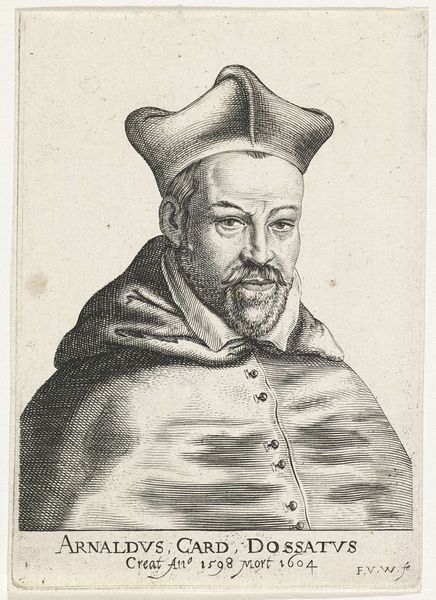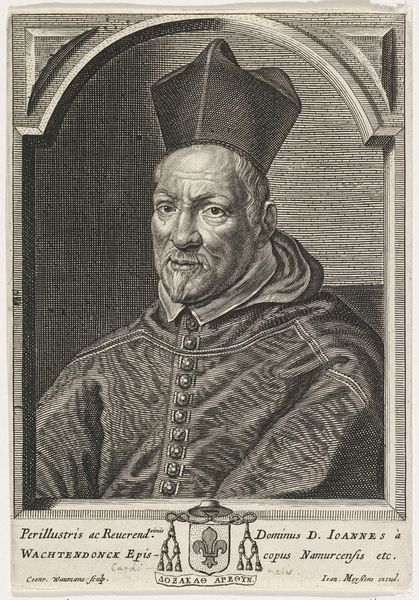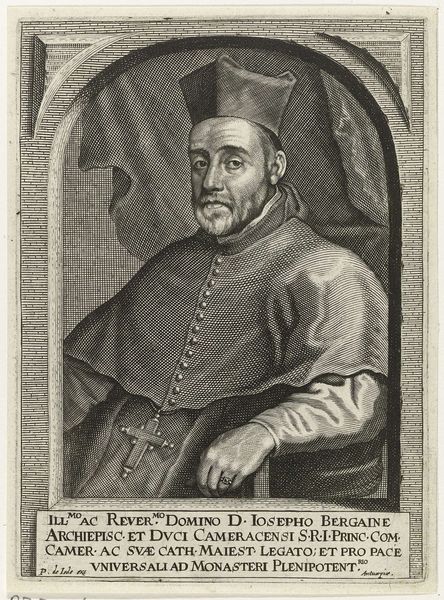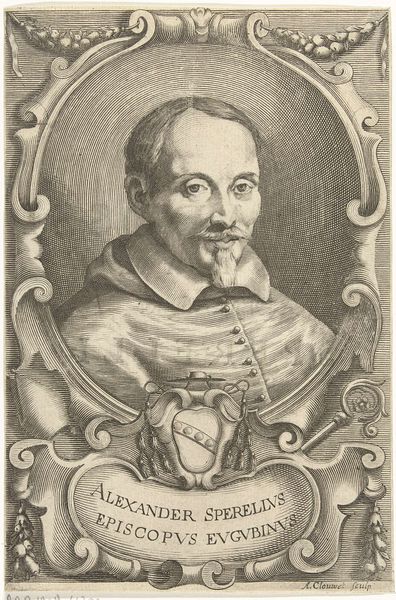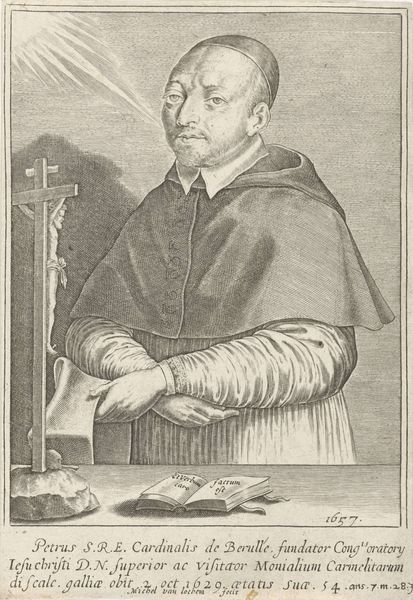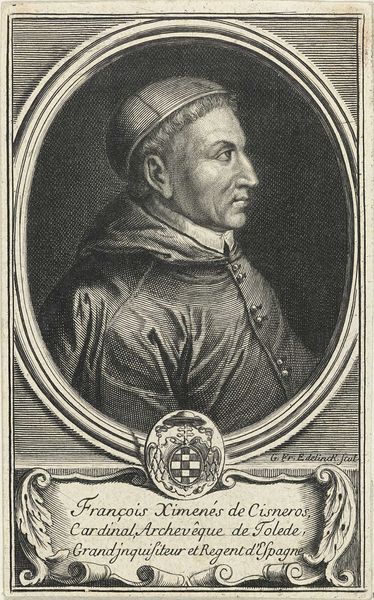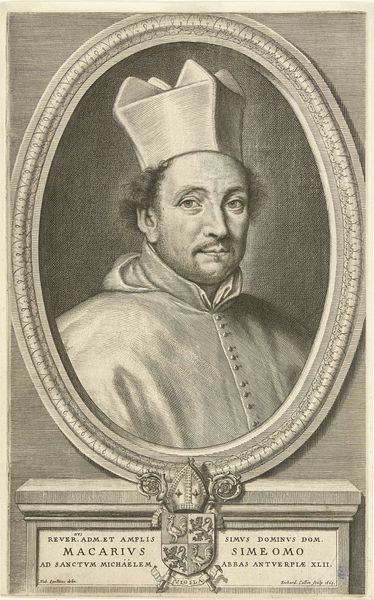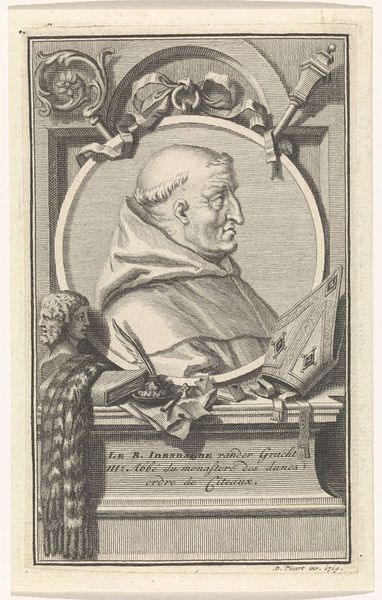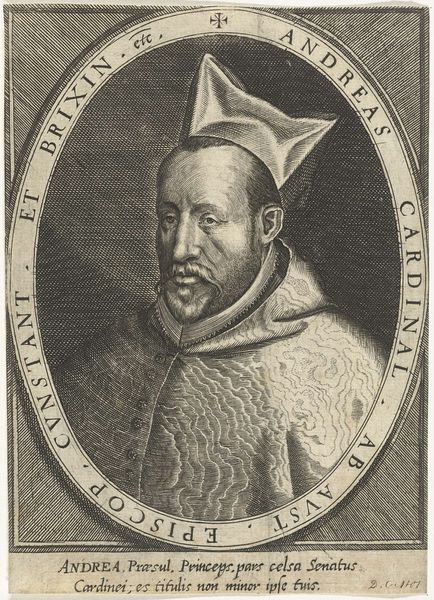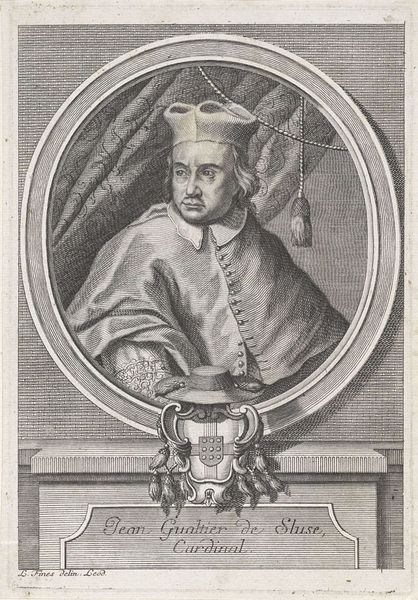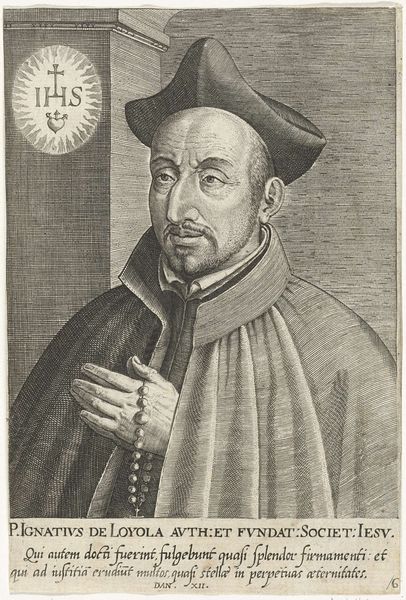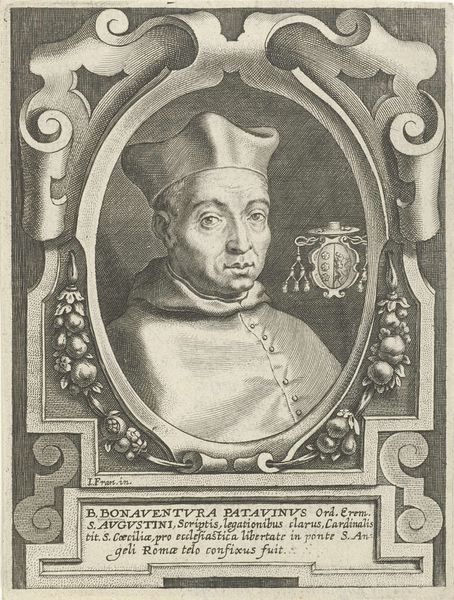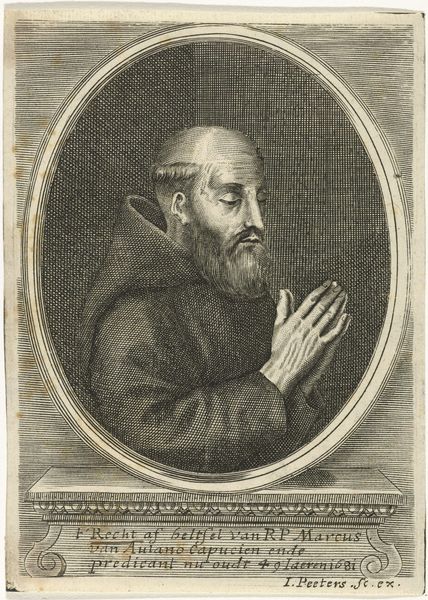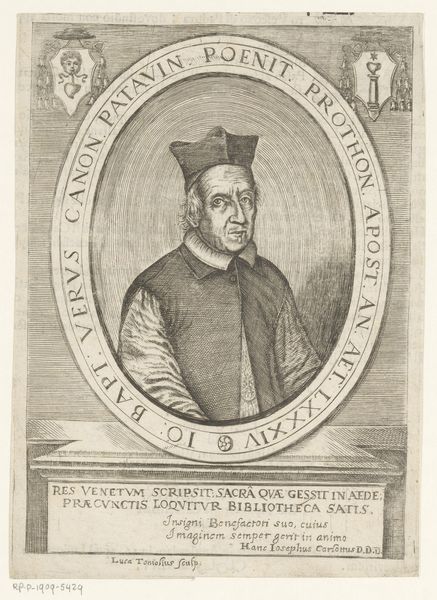
print, engraving
#
portrait
#
baroque
# print
#
old engraving style
#
charcoal drawing
#
portrait reference
#
portrait drawing
#
history-painting
#
engraving
Dimensions: height 144 mm, width 100 mm
Copyright: Rijks Museum: Open Domain
Curator: Here we have "Portret van Gregorius a Sancto Vincentio" a striking engraving likely crafted between 1660 and 1730 by Gerard de Groos. The oval framing immediately evokes a sense of formality. Editor: My first impression is how incredibly detailed this portrait is. The density of lines gives the image a certain weight, almost somber gravitas. The man’s steady gaze hints at his powerful status. Curator: Indeed. This work presents Gregorius a Sancto Vincentio, a Belgian Jesuit, scholar, and mathematician. The book he holds, his cap, are important signs. Editor: Of course, it signals intellect, study, and religious office – very important clues for a Baroque audience who was likely trained to look for allegorical markers like these. But how was De Groos portraying the church during this time of counter-reformation, for example? Curator: The meticulous detail in the folds of his robe and the texture of the book seem intended to convey dignity, respect, and power in the Church – it feels like visual rhetoric almost, an exercise in how one represents power structures via symbolism. The book itself might reference Vincentio's own published works. Editor: And think about the political undertones of the portrait’s inscription! Noting Vincentio’s work for Ferdinand II, who was central in the early conflicts of the Thirty Years’ War, makes this not only a religious but also a loaded political image that links Catholicism and political might during times of immense confessional divisions. Curator: Exactly. The power is there even without overtly political symbols. The Baroque style here also suggests grandeur. In that time period it also reinforces ideas around hierarchy in culture. Editor: Ultimately this portrait serves to immortalize Gregorius but also, more subtly, a network of relationships tied to status, influence, and the powerful figures. Thank you for highlighting this! Curator: And thank you for considering the ways in which the political context imbues new layers of meaning and social history to the imagery!
Comments
No comments
Be the first to comment and join the conversation on the ultimate creative platform.
